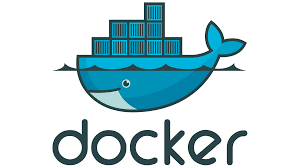Mastering Docker Commands: A Comprehensive Guide
 Rutuja Deodhar
Rutuja Deodhar
Docker has revolutionized the way developers build, ship, and run applications. With its containerization technology. Docker enables the creation of lightweight, portable, and scalable software environments. To leverage Docker effectively, it's essential to understand and master its commands. In this blog post, we'll explore some fundamental Docker commands, including their uses, exceptions, and expected results.
To install Docker refer https://docs.docker.com/engine/install/ubuntu/
1. docker run Command:
Use: The
docker runcommand creates and starts a new container based on a specified image.Exceptions: If the specified image is not available locally, Docker will attempt to download it from the configured registry.
Result: The container is started, and any specified commands are executed within it.
Example:
docker run hello_world
2. docker inspect Command:
Use:
docker inspectprovides detailed information about containers or images, including configuration, networking, and volume data.Exceptions: If the specified container or image does not exist, Docker will return an error.
Result: JSON-formatted data containing comprehensive details about the specified container or image.
Example:
docker inspect my_container
3. docker port Command:
Use:
docker portlists the port mappings for a specific container.Exceptions: If the container is not running or does not expose any ports, Docker will return an empty response.
Result: Displays the port mappings for the specified container in the format
CONTAINER_PORT/PROTOCOL -> HOST_IP:HOST_PORT.
Example:
docker port my_container
4. docker stats Command:
Use:
docker statsprovides real-time resource usage statistics for one or more running containers.Exceptions: If no containers are running, Docker will return an empty response.
Result: Continuous monitoring of CPU, memory, network, and disk usage for the specified containers.
Example:
docker stats my_container
5. docker top Command:
Use:
docker topdisplays the processes running inside a container.Exceptions: If the specified container is not running or does not have any processes, Docker will return an empty response.
Result: Lists the active processes within the container, similar to the
topcommand in Linux.
Example:
docker top my_container
6. docker save and docker load Commands:
Use:
docker saveis used to save an image to a tar archive, whiledocker loadis used to load an image from a tar archive.Exceptions: If the specified image does not exist or if there are permission issues, Docker will return an error.
Result:
docker savecreates a tar archive containing the image, whiledocker loadimports the image from the tar archive into the local Docker environment.
Examples:
docker save -o my_image.tar my_image
docker load -i my_image.tar
Conclusion:
Understanding Docker commands is crucial for effective container management. From creating and inspecting containers to monitoring resources and managing images, mastering these commands streamlines workflows, empowering developers to harness Docker's full potential in software development.
Subscribe to my newsletter
Read articles from Rutuja Deodhar directly inside your inbox. Subscribe to the newsletter, and don't miss out.
Written by
